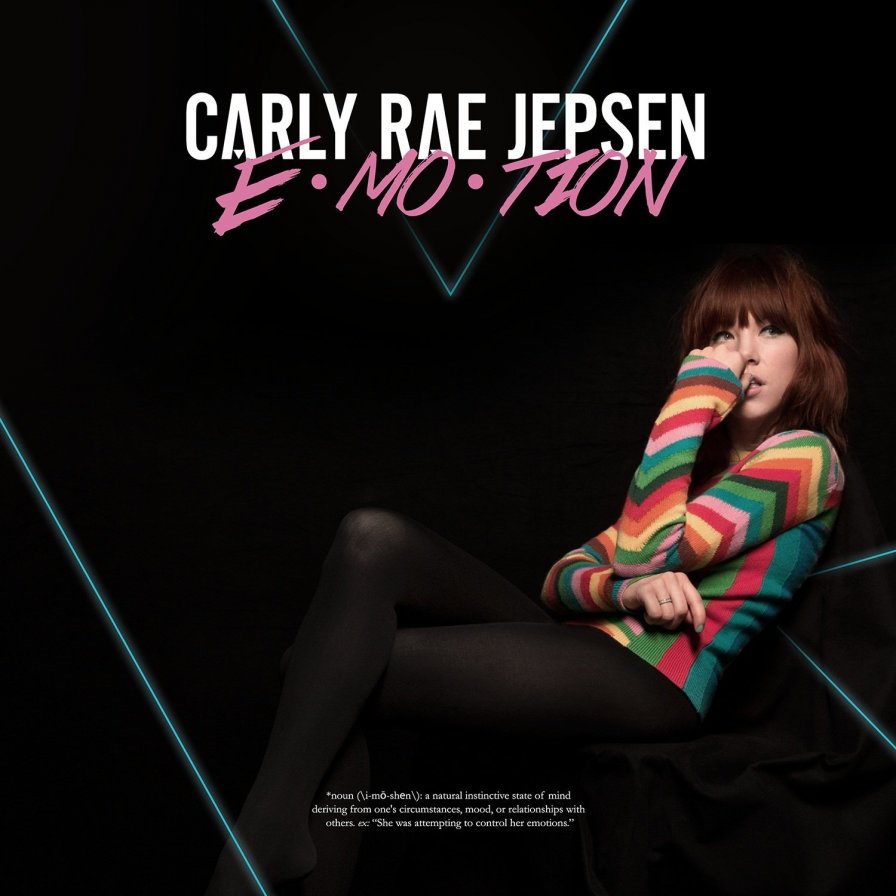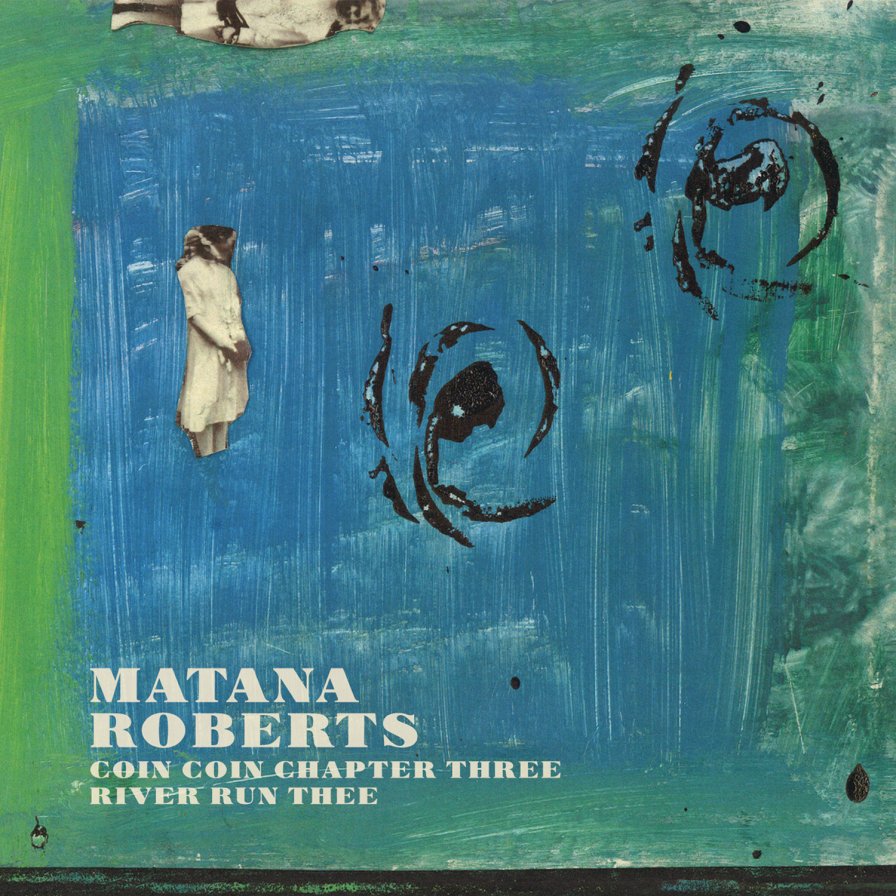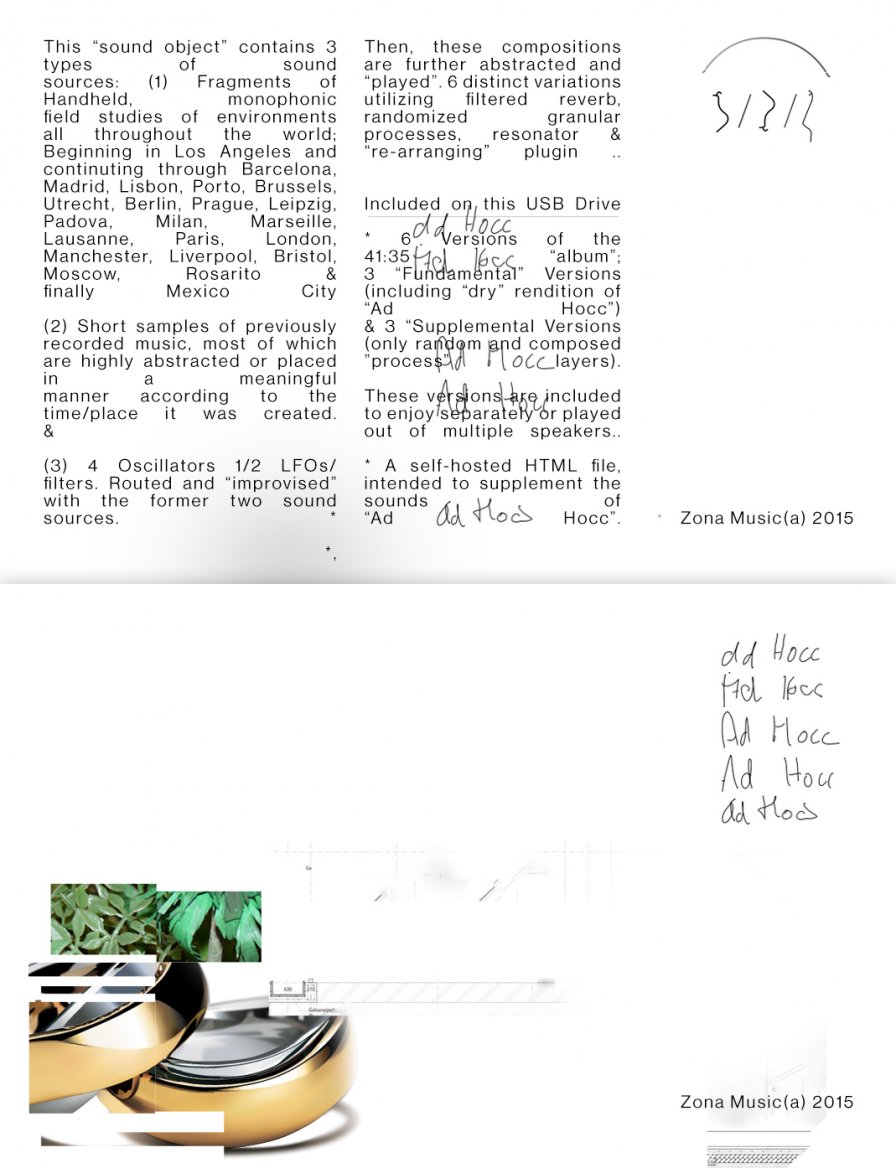We celebrate the end of the year the only way we know how: through lists, essays, and mixes. Join us as we explore the music that helped define the year. More from this series
30
U.S. Girls
Half Free
[4AD]

Ever evolving her style, from the early lo-fi one-woman group aesthetic into a virtual cornucopia of peculiar apocalypse pop somewhere between Phil Spector and Prince Rama, Meghan Remy’s artistic vision reached a rousing crescendo with Half Free. Remy’s first record for 4AD continued her work with Louis Percival (a.k.a. Onakabazien), the producer who helped craft her unheralded Free Advice Column EP from 2013. With Percival’s groove-oriented influence, her instrumentals dug their claws into jaunty sax-driven rock, deconstructed 80s pop, piano- and string-laden disco, sci-fi reggae, and cavernous R&B, all clustered around one of the oddest phone call interludes on record. Right from its incestuous opening number — the sluggish Odd Nosdam-esque “Sororal Feelings,” in which the subject hangs herself from her family tree — Remy’s lyrical content was as arresting as her warbling, affected voice, grounding her pop record from the end of time with as much emotional gravity as flirtatious extravagance. Half Free walked a line few others could even see.
29
Carly Rae Jepsen
E•MO•TION
[Interscope]

The last time I ironically liked music was in 2012. The song was Carly Rae Jepsen’s “Call Me Maybe,” and it was a brief period sandwiched between a time when I hated the song and before I came around to realizing its crowd-pleasing incantations could transcend. Jepsen’s third album E•MO•TION got a lot of critical attention in 2015, and a lot of people said a lot of smart (?) things about the album’s self-awareness, the producers, and CRJ’s persona(lity). But divorced from any critical dissection, I sincerely loved E•MO•TION SO MUCH. Here’s why: I listened to it a lot in 2015, and I still want to listen to it even more; its impact never lessened. When I listened to it in the car on the way to work, it put me in a positive place, ready for work. When I listened to it with a drink in my hand, it made me dance. The album’s 80s influences never felt chintzy; instead they were an earnest re-packaging of styles Jepsen adored. Sure, there were times this year when I put on Fourth World Magazine or Elysia Crampton to help me transcend, but nothing brought me quicker and more often to the sublime than E•MO•TION.
28
Prurient
Frozen Niagara Falls
[Profound Lore]

“We invite pain. It’s okay to be hungry. Hunger is normal. I’ll meet you there.” These lines from Frozen Niagara Falls (off “Falling Mask”) could summarize the artist/consumer relationship for a lot of Dominick Fernow’s fans. We’ve been long welcoming Dom’s pain, both lyrical and musical, into our lives with albums like Bermuda Drain, History of AIDS, And Still, Wanting, and Through The Window, among many, many others. And while each of the aforementioned releases sound significantly different from each other, they also sound like they couldn’t have been created by anyone else. Frozen Niagara Falls was a sort of compendium of these acts: it featured a ton of noise, some techno, a little cold wave, and even a pretty direct spoken-word track. While covering this ground, the album managed to concisely pull these disparate threads into sharp focus, showing too how Dom is nothing if not adventurous. Now let’s match that intensity by taking off our shirts and screaming into a contact mic until someone’s ears explode.
27
M.E.S.H.
Piteous Gate
[PAN]

I can see it now. The deep, machinic pulse that begins M.E.S.H.’s Piteous Gate forms visually in the ear’s mind’s eye, spectrogramming automatically. Yes, the whole album is in a constant state of approaching form, an expression of making something out through distance or fog, of letting the listener know that these sounds are attached to something, something coming. Pre- or post- disaster songs. Abstractions, jagged and unfriendly, clustered around visualizable objects: the whipstrike on “Optimate;” the tense, aquatic movements contrasting the shocked, gunshot beats on “Epithet” or “Azov Seepage.” Piteous Gate struck us this year as an album of accessibility (to information, to sound, to sense, to others) turned obsessive, of signifier and signified coming together and then bursting apart.
26
Fourth World Magazine Vol. II
Pinhead in Fantasia
[Pacificity Soundvisions]

What did we think of Pinhead in Fantasia? Why did we think at all about it? It was an objet d’art that longed to be lost in time and space, wavering between years, completely destructible, and already long gone by the time anyone thought to order it. It was a limb, disembodied, that slapped in the dark. It hit and hit, but where and who? Once, earlier this year, I sat down and listened and knew that I never needed to listen again, because I had heard enough to know — but what? What is fantasia, anyway? Baroque improvisation? A Music from Earth? Harley_Magoo thinks "you will enjoy this if you love conceptual stuff." I don't know what C Monster thinks, but I love it (and him), too. One other thing of which I'm certain is this: I need to listen to Pinhead again and again, but, first, I need to follow its misdirection, forever, into the light. Bye bye.
25
Matana Roberts
COIN COIN Chapter Three: river run thee
[Constellation]

The COIN COIN series is limitless in the scope and breadth of its stories. Matana Roberts delves into the emotional trenches of history and religion, which come bound up in the strife and the joy of her interlocutors. The potent and chaotic subjects she exposes us to play out through interpretation and stark yet colorful improvisation. Roberts takes care to define her source material while granting it context within the immersive collage of her work. On Chapter Three, the impact that each contribution had on the artist was brought to the fore by virtue of the album's composition. Roberts offered soundscapes both sullen and boisterous, carrying the sentiment through her use of field recordings, experimentation, and repetition, making this her most deeply personal and affecting record to date. However, the music cautiously uncovered the lives of those represented, which Roberts brought out in ways that were poignant and shattering. This project was about people, good and bad; it was about life, impossibly tough and shamefully brutal. And it conveyed a simple message: Every life has a story to tell, and every story matters. All that's required of us is to listen.
24
Cloud Rat
Qliphoth
[Halo of Flies]

In the last two years, I lost nearly 100 pounds. I have found it hard to lace my workouts with irony, but for the first six months, I tried. I listened to audiobooks while I ran. I scowled my way through it. At some point, though, I put on Cloud Rat and ran to the top of a set of stairs feeling a little corny, but mostly fast and winded. Jeffrey Dunn Rovinelli talked about the way that metal and hardcore are some of "the most rigidly codified forms of music around" in his review of Qliphoth, and I'm thinking analogically when I draw a line from that codification to the workouts enforced by the Rocky franchise every time a set of stairs comes in view around mile three. I may be lacking subtlety when I conceptualize Qliphoth as motivational, but I don't mind. The plain fact is that Cloud Rat organized sound in a way that came off violent, beautiful, and suffused with energy. So, hello, this is Taylor at the top of some stairs, wrapped in a warm cliché, smiling, and telling you how much Qliphoth meant to me in 2015.
23
Jenny Hval
Apocalypse, girl
[Sacred Bones]

While a lot of writing about Jenny Hval and Apocalypse, girl fixate on her overt sexuality, such focus can also do this album a disservice. Because Hval grappled with more than just bold subject matter. What she did was actually more sleight-of-hand, planting images like the "four big bananas" she strokes in her lap on opener "Kingsize." It was a powerful image that allowed us to extrapolate more implied meaning than she could ever paint with her otherwise confronting lyrics. The compositions themselves were also deftly touched with these sparse hints of ideas, allowing listeners to draw out elements of stylistic references sitting between the lines of the often minimalist constructions. Instead of presenting ideas of content or style, we slipped through a stream of steamy synth-driven songs that guided us effortlessly to the literal and figurative "Holy Land." It was here, in the album's haunted conclusion, where we were unsure how to describe the musical experience as anything other than a strange pleasure. Which is, in a lot of ways, exactly like any sort of sexual exploration. Genius.
22
Helen
The Original Faces
[Kranky]

A nod is as good as a wink for Helen's principles, who capture the loose energy of rock & roll long left at the roadside. In all the epitaphs for this brand of music, they often harken to some wayward nostalgia of how it used to be and what will never come again. Ignoring old fogey philosophy, The Original Faces was an alternative record in the best possible sense. Considering how fragmented listening habits continue to become, having an album that played it straight to a world of outrageous genres was a blessing. Had me a real good time just concentrating on its distorted riffs, echoing vocals, and pounding rhythm section. But The Original Faces wasn't a monolithic beast paying respect to the past. Just because it felt familiar, doesn't mean it sounded familiar. If rock is ever going to be front and center again, it must take notes from The Original Faces.
21
D/P/I
Ad Hocc
[Zona Music]

With Ad Hocc, D/P/I continued his skin-wrinkling bath in the deep end of the now of the future. This memory stick that flipped out of a business card (memory business card?), which listeners connected to speakers via Universal Serial Bus, had an astounding and proliferative set of fundamental and supplementary tracks — all 41:35 in length — that passed no hot potatoes into the hands of the Gimmick. Instead, they hit, in any and all of their combinations, at the gut-level (voted by Tiny Level Tapes as the most zeitgeist-friendly level of 2015). This wasn't your nephew popping out of the bushes and screaming "Zaireeka!" with his palms up looking for a handout, but a generous statement from a generous and continually evolving artist. Out of the carefully handled, ephemeral sounds trotted pontifications and celebrations of our tinny speakers, our iffy eighth-inch headphone jacks, our Bluetooth connections, our buffering speeds, and the way those meat-meets-cyberspace accidents shape our emotional life. Exhilarating and fragile in execution, strong and mighty in mind and thought. One effect: last week I was listening to a Kinks greatest hits CD in the car and "Tired of Waiting For You" started skipping. I breathed deeply and thought, "If only I also had "Supplement #2" playing on a Jambox. I could keep the speaker in a cupholder..."
More about: 2015, ahnnu, Amnesia Scanner, Arca, Autre Ne Veut, Beat Detectives, Bjork, Carly Rae Jepsen, Chino Amobi, Cloud Rat, Container, D/P/I, Dawn Richard, DJ Nigga Fox, Drake, Eartheater, Elysia Crampton, Future, Giant Claw, Grimes, Helen, Holly Hnerdon, James Ferraro, Jenny Hval, Joanna Newsom, Julia Holter, Kendrick Lamar, Lil ugly mane, Lolina, M.E.S.H., Matana Roberts, Oneohtrix Point Never, Prurient, Rabit, Sicko Mobb, Smurphy, SOPHIE, Sufjan Stevens, U.S. Girls, Young Thug, ZS
We celebrate the end of the year the only way we know how: through lists, essays, and mixes. Join us as we explore the music that helped define the year. More from this series



